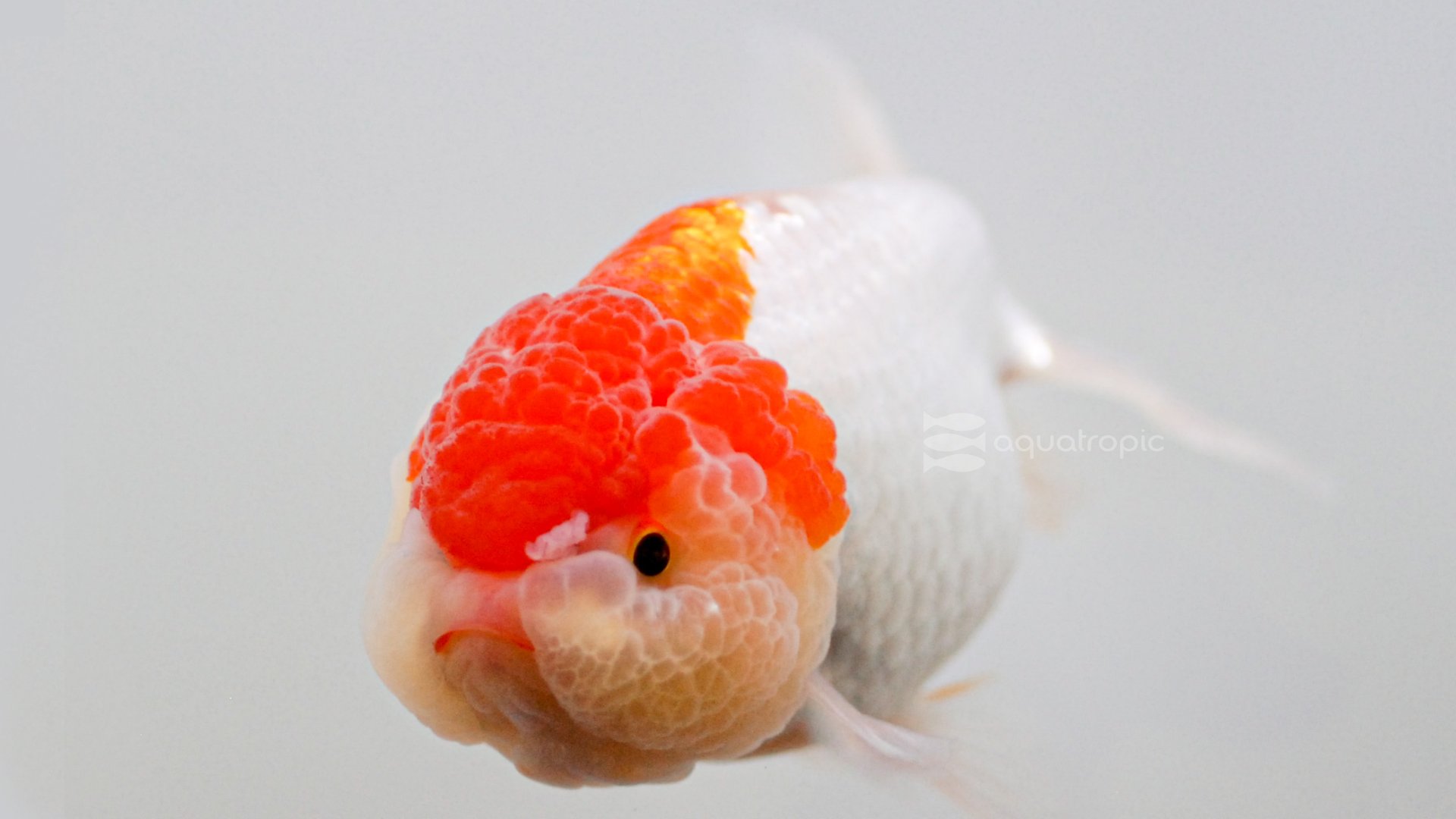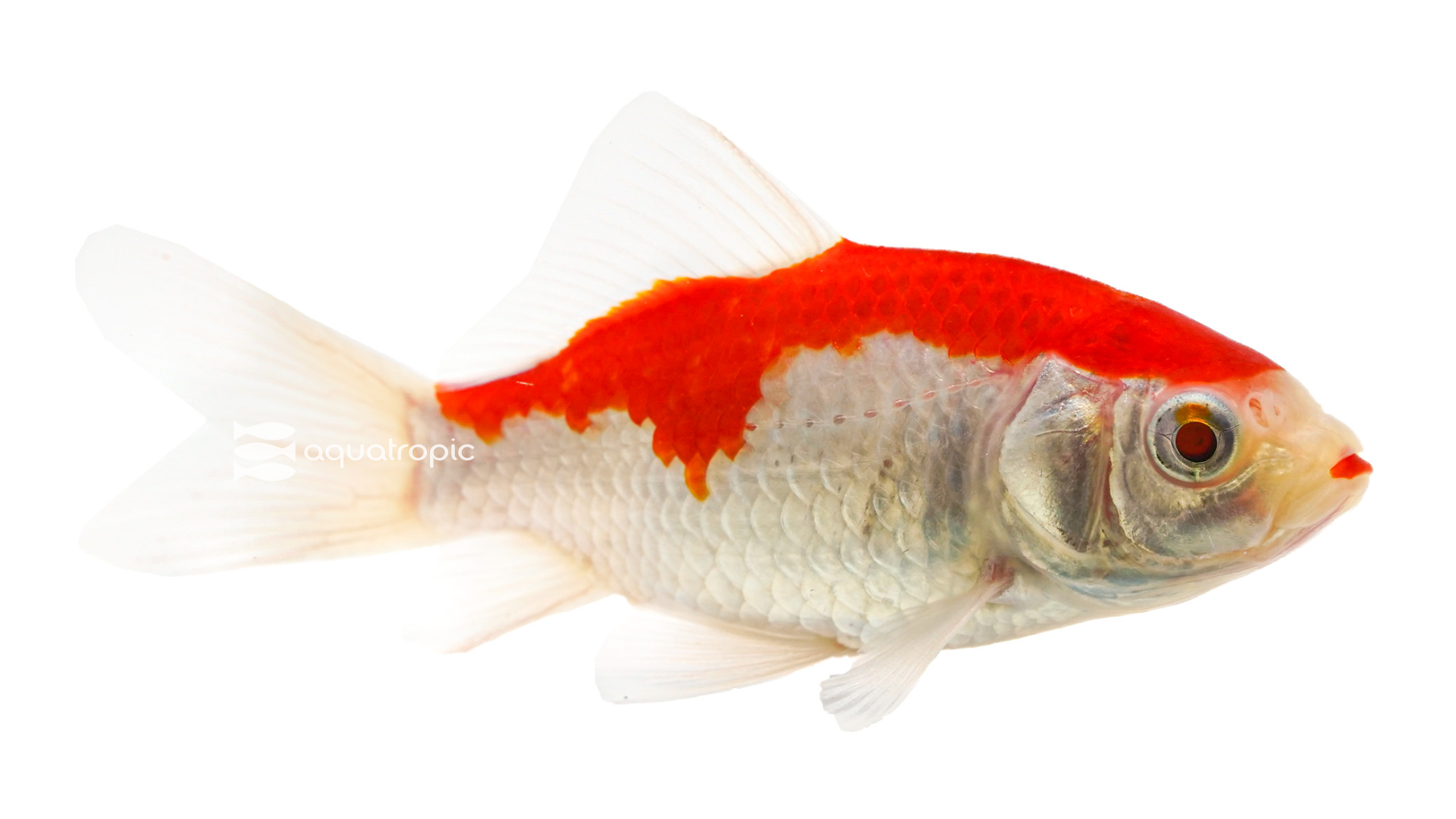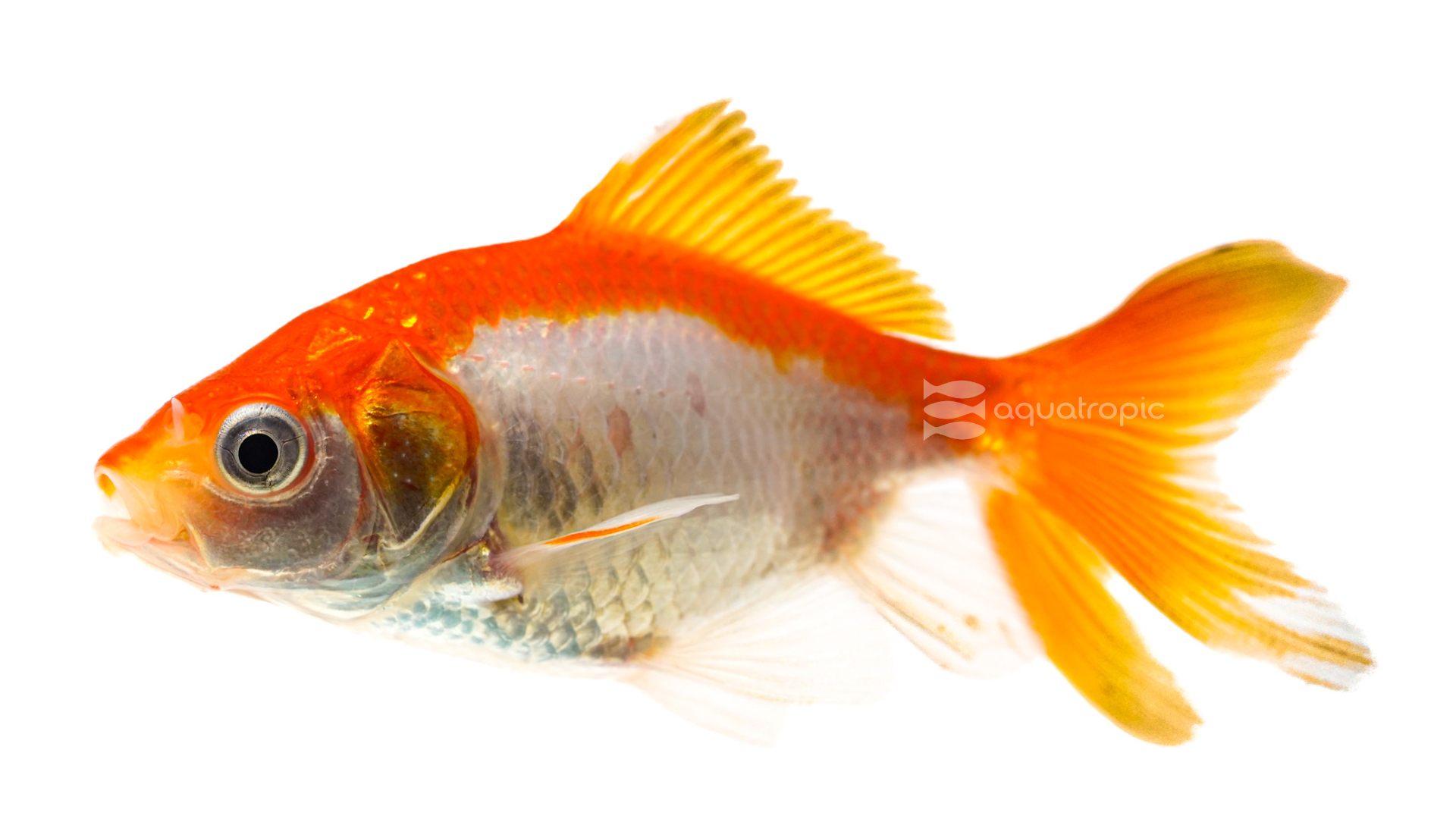History of the Goldfish

Goldfish are members of the carp family, descendants of a food fish called Crucian Carp. The Crucian Carp were silver fish that grew quickly, and reproduced frequently, (and must have tasted okay too). These fish were being reared in ponds since at least 1000BCE.
Sometime during the Jin Dynasty (266-420), some of these Crucian Carp showed a mutation that resulted in them having colored scales, with red allegedly being first. These fish were selectively bred and over time, other colors began to emerge. By the Tang Dynasty (618-907) colored carp, including golds, oranges, reds and yellows were being kept as wet pets in private ponds. By the tail end of the Song (Sung) Dynasty (960-1279) only royalty was allowed to keep the yellow variety, as gold was the imperial color. The Orangish ones could be owned by citizens and it's around this time they got the name “Goldfish.” In this same time frame, we saw the advent of porcelain bowls being used as temporary displays, where fish would be removed from ponds and shown off to guests, likely the first “fishbowl.”
By 1502 (some reports say 1620), Chinese merchants had brought the Goldfish to Japan, where they were sold to nobility and Samurai. By this point in history, the Goldfish had become symbolic of wealth, and talismans of good luck, as such they were highly prized as pets. Shortly after their introduction to Japan, are the first records of Goldfish with multiple colors and spots. In the Ming Dynasty (1368-1644), this same period of history in China, those new porcelain bowls were being used to house and breed new varieties of Goldfish indoors, and then is when we see the advent of “tailed” (meaning fancy tails: flowing or doubled etc) Goldfish.

By 1611, Portuguese traders brought Goldfish back to northern Europe, where they retained their status as symbols of fortune and good luck. Sometime soon afterward it became a short-lived tradition for men to gift their wives a Goldfish on their first anniversary, as a talisman for future prosperity. The Goldfish got its scientific name when it was classified by Carl Linneaus, A Swedish Biologist and Physician published his book Systema Naturae in 1758. Goldfish first came to north America 100 years or so later, and it seems fishy that it took so long to get here. The first official import to the US of Goldfish came from Japan in 1878. We have very good records of this, because it was done by the United States Commission on Fisheries.
Before the official story, there are a couple claims to sort out. A New Yorker named Capt. Henry Robinson allegedly  bought some in France, brought them home, stocked ponds at his house where they bred and according to the story, he gave away offspring. He laid claim to being the first importer of Goldfish. PT Barnum (yes, that PT Barnum, Barnum and Bailey, Greatest Show on Earth). Opened the first North American Public aquarium in 1858, and also claimed to have imported the first Goldfish. It's fairly likely his aquarium had Goldfish, as they we're fancy, sought after, and conditioned to captivity.
bought some in France, brought them home, stocked ponds at his house where they bred and according to the story, he gave away offspring. He laid claim to being the first importer of Goldfish. PT Barnum (yes, that PT Barnum, Barnum and Bailey, Greatest Show on Earth). Opened the first North American Public aquarium in 1858, and also claimed to have imported the first Goldfish. It's fairly likely his aquarium had Goldfish, as they we're fancy, sought after, and conditioned to captivity.
But the official story, where we know with certainty that Goldfish arrived in the US, happened when the US Government brought in the fish from Japan, raised them in ponds in Maryland and DC, then proceeded to give away (free) fish, with a small fishbowl to residents of the District of Columbia. All someone had to do was request one. At the time, the Fisheries Commission was a young organization and relatively unknown. This certainly changed all that. The great Goldfish giveaway lasted until at least 1894, and at the peak of this distribution, they were giving away more than 20,000 fish per year.
Needless to say, the Goldfish of humble origins was by now a world-famous globetrotter. By the late 1800s there were commercial Goldfish breeders in the United States and a century later they had become so commonplace that they were often the prize at fairs throughout the United States. You could toss a ball into a bunch of fishbowls and if the bowl had a Goldfish in it, you got to keep the Goldfish. Their ease of culture and rapid growth led to their use as a feeder fish for other, larger predatory fish, and thus the term “feeder Goldfish” was born.
Now there are dozens of varieties of Goldfish for aquarists to choose from. So go forth, and marvel at the Goldfish, whose relatives where silver, and who now can be found in an endless variety of colors and shapes and fin arrangements. There is a certain amount of irony in the fact that the silver color they came from, is now one of the more expensive varieties to purchase. Once upon a time only the Emperor of China was allowed to keep them, and later, they were also given away as low value prizes to children. Few fish can claim such an illustrious history, and surely none (save perhaps Koi) has such a well-documented one. As a curiosity, a group of Goldfish is called a troubling. Happy Fishkeeping.